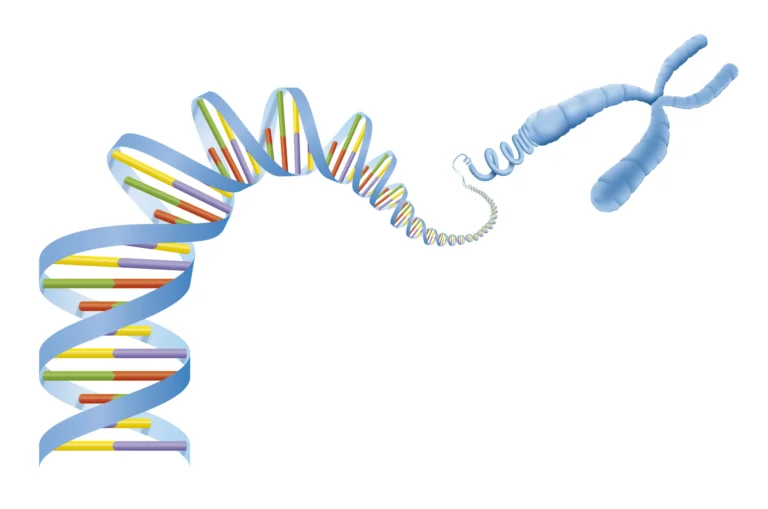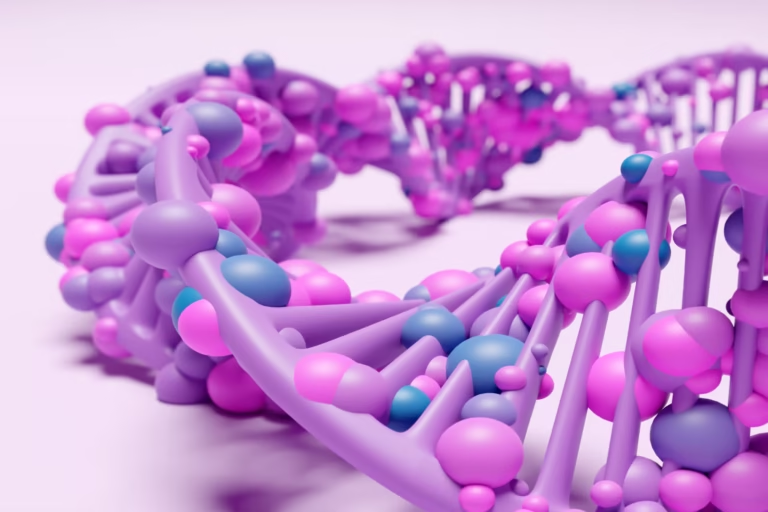Preemptive Genetic Testing for TPMT and NUDT15
The interplay between genetic variances within the TPMT and NUDT15 genes and drug metabolism is profound. It markedly increases the chance of drug toxicity when individuals are administered standard thiopurine doses. This underscores the critical role of preemptive genetic testing for TPMT and NUDT15. It is pivotal in ensuring safer pharmacotherapeutic approaches and tailoring care solely to patient-specific requirements.

Key Takeaways:
- Preemptive genetic testing for TPMT and NUDT15 is crucial in optimizing thiopurine treatment.
- Variants in the TPMT and NUDT15 genes can lead to an accumulation of harmful metabolites and increase the risk of toxicity.
- Clinical implementation of TPMT and NUDT15 testing has shown positive outcomes, improving patient care.
- Understanding TPMT and NUDT15 genetic variations can guide medication selection and dosing, ultimately improving patient outcomes.
- Genetic testing plays a vital role in personalized medicine and pharmacogenomics.
The Role of TPMT and NUDT15 in Thiopurine Toxicity
Thiopurines, including azathioprine, mercaptopurine, and thioguanine, are pivotal in treating numerous ailments such as acute lymphoblastic leukemia, inflammatory bowel disease, and countering organ transplant rejection. However, individual reactions differ significantly, leading to severe drug responses. This variance is especially perilous in hematopoietic toxicity, a prevalent issue.
The functioning of thiopurine metabolism heavily relies on genetic configurations within the TPMT and NUDT15 genes. Alterations in these genes can hamper enzyme efficacy, dramatically influencing drug metabolism and subsequent toxicity. Thus, individuals carrying specific genetic variants in TPMT and NUDT15 are predisposed to heightened adverse drug reactions under standard thiopurine medications.
Variations in TPMT and NUDT15 genes can spur the generation of elevated levels of toxic metabolites, significantly augmenting thiopurine toxicity risks. By delving into the effects of TPMT and NUDT15 genetic variations on thiopurine metabolism, healthcare professionals are empowered to adopt personalized medication dosages. This strategy serves to alleviate adverse drug reactions, enhancing treatment effectiveness safely.
Undoubtedly, genetic testing targeting TPMT and NUDT15 polymorphisms is pivotal in preempting thiopurine toxicity. Such insights enable healthcare providers to fine-tune medication regimens or consider alternative treatments, thus improving patient care outcomes. Moreover, this diagnostic approach champions personalized medicine, guiding the selection of medications suitable to an individual’s genetic preconditions.
Clinical Implementation of TPMT and NUDT15 Testing
The integration of TPMT and NUDT15 testing into clinical practice is pivotal. It guides thiopurine dosing, reducing the risk of adverse drug reactions. As a facet of pharmacogenomic testing, these genetic assessments facilitate personalized medicine. They refine medication type and amount based on each individual’s genetic composition.
Clinical laboratories have formulated genotyping panels for TPMT and NUDT15 fortuitously. This technical development has markedly improved thiopurine therapy. It has streamlined the creation of efficacious treatment strategies that better patient care outcomes.
Integrating TPMT and NUDT15 testing furnishes health professionals with indispensable insights into drug metabolism. This information equips them to judiciously select drugs, ascertain dosages, and consider alternative medications. Such strategies are vital in championing patient safety and treatment effectiveness.
“TPMT and NUDT15 testing epitomizes a profound leap in personalized medicine’s application. It bespoke drug therapy’s paradigm shift, enabling precise tailoring of treatment designs to individual genetic nuances. This meticulous approach mitigates adverse drug reactions, fostering superior patient returns.”
Rapid and Accurate Testing
The remarkable advantage of TPMT and NUDT15 testing is its swiftness. It allows medical practitioners to promptly access results that inform concrete actions. Laboratories have refined their methodologies to ensure prompt service, enhancing patient experiences.
Additionally, test precision is indispensable in treatment direction. By pinpointing genetic markers affecting drug assimilation, doctors can proactively hone medication plans. This approach maximizes the therapeutic value of treatments for each patient.
Enhancing Patient Care
The advent of TPMT and NUDT15 testing has fundamentally altered the thematic of personalized medicine. It spotlights patient welfare by segmenting them by genetic makeup. Such precision facilitates treatment plan modifications that avert adverse drug effects.
Notably, this testing also identifies patients predisposed to drug toxicity. It allows for fine-tuning medication dosages, aiming for efficacy without undue harm. This refined strategy underscores the patient-centered philosophy in healthcare delivery.
The implementation of TPMT and NUDT15 testing constitutes a milestone in integrating pharmacogenomics into standard care practices. It initiates a shift towards highly individualized drug therapy. The central goal remains to optimize patient well-being.
Clinical Impact of TPMT and NUDT15 Testing
| Impact | Findings | Clinical Recommendations |
|---|---|---|
| Identification of TPMT variants | A significant proportion of patients were identified as intermediate or poor metabolizers | Adjusted drug dosage or alternative medications |
| Evaluation of NUDT15 variants | Identification of patients at risk of thiopurine-induced myelosuppression | Personalized medication selection and dosing adjustments |
| Implementation of pharmacogenomic testing | Efficient and accurate genotyping panels for TPMT and NUDT15 | Evidence-based personalized medicine for thiopurine therapy |
Significant clinical impact has been observed with TPMT and NUDT15 testing. Results indicate enhanced patient well-being, a decrease in adverse drug effects, and an amplifier for personalized medicine progress.
Utilization and Outcomes of TPMT and NUDT15 Genetic Testing
A comprehensive investigation was launched, focusing on the application and results of genetic testing associated with TPMT and NUDT15 in the sphere of thiopurine therapy. This examination unearthed pivotal insights, shedding light on the test’s clinical efficacy. The test’s high demand in both gastroenterology and neurology practices is indicative of its pivotal role in directing patient care strategies in the context of thiopurine therapy.
Moreover, findings from the study indicated a swift average turnaround time of merely 2 days for TPMT and NUDT15 genetic testing. This expeditious delivery of results equips care providers with prompt, vital information. It significantly bolsters the speed and seamlessness of integrating genetic testing into the diagnostic and treatment regimen.
Further analysis from the study underscored the testing’s prowess in delineating patients as either intermediate or poor metabolizers. Such categorization was instrumental in formulating crucial therapeutic suggestions, primarily focusing on adjustments in drug choice or dosage within the purview of thiopurine therapy. The end goal remains the optimization of treatment efficacy while simultaneously mitigating the risks associated with adverse drug reactions.
In a noteworthy revelation, a substantial majority of patients subjected to TPMT and NUDT15 genetic testing witnessed the actualization of advised therapeutic modifications, encompassing drug or dose alterations, as integral components of their clinical care. This operationalizes the discernible and actionable attributes of genetic information. Clinicians tailor treatment plans with a patient-centric lens, leveraging genetic data to customize therapy per individual.
Cumulatively, the incorporation of TPMT and NUDT15 genetic testing in the landscape of thiopurine therapy highlights the imperative of amalgamating genetic diagnostics within medical frameworks. This paradigm allows for the identification of individuals necessitating modifications in their drug regimen, customized on the basis of genetic markers. The upshot is an amelioration in patient outcomes and safety, firmly establishing the value proposition of personalized medicine.
| Utilization and Outcomes of TPMT and NUDT15 Genetic Testing |
|---|
| Commonly ordered in gastroenterology and neurology settings |
| Average turnaround time of 2 days |
| Identified significant proportion of intermediate or poor metabolizers |
| Recommendations for drug or dose changes implemented in over 50% of patients |
Potential for Multi-Gene Pharmacogenomic Testing in Thiopurine Therapy
A sophisticated analysis of drug gene interactions, conducted in a clinical laboratory setting, illuminates the salient potential of multi-gene pharmacogenomic testing. It is tailored towards enhancing treatment efficacy for a substantial subset of patients, notably those undergoing a regimen of multiple concurrent medications. The provision of actionable insights, predicated on an individual’s genetic constitution, stands out as pivotal in this context.
This avant-garde form of diagnostic evaluation, multi-gene pharmacogenomic testing, articulates a nuanced narrative. It delineates the interplay between an individual’s genetic fabric and their drug response. By scrutinizing genes intrinsic to drug metabolism and their complex interactions, this methodology bestows a comprehensive vista of a patient’s pharmacogenomic landscape. Such insight empowers healthcare professionals to cement their decision-making prowess, thereby facilitating superior patient treatment strategies.
One of its eminent virtues is the revelation of obscure drug gene interactions, improbable to unveil through isolated gene testing. These revelations are pertinent in anticipating and mitigating the risk of adverse drug events or poor medication responses. It thus serves as a proactive diagnostic instrument, augmenting patient care standards.
The integration of multi-gene pharmacogenomic testing into the clinical domain necessitates the formulation of robust guidelines and educational initiatives tailored to healthcare providers. This knowledge transmission is imperative to ensure optimal utilization of the test results. It underscores the criticality of enhancing clinicians’ acumen in interpreting and applying this complex diagnostic information. By assimilating this diagnostic modality into daily medical practice, it facilitates the fine-tuning of drug selection criteria and dosage determination, which, in turn, betters patient prognosis.
“Multi-gene pharmacogenomic testing offers a comprehensive approach to understanding how an individual’s genetic makeup may influence their response to medication.”
Potential Benefits of Multi-Gene Pharmacogenomic Testing:
- Actionable guidance for treatment optimization based on a patient’s unique genetic profile
- Identification of potential drug gene interactions that may impact medication efficacy and safety
- Enhanced ability to personalize medication selection and dosing for patients on thiopurine therapy
- Improved clinical care by reducing the risk of adverse drug reactions
Adopting multi-gene pharmacogenomic testing as a preemptive strategy significantly amplifies its therapeutic potential. This proactive approach allows for the early detection of pharmacogenomic outliers, necessitating tailored interventions such as alternative drugs or personalized dosages. Such foresightedness culminates in treatment regimens that are both efficacious and safe.
It’s imperative to acknowledge that the domain of multi-gene pharmacogenomic testing transcends the customary TPMT and NUDT15 genetic evaluations. By broadening the genetic spectrum to encompass a plethora of drug metabolism and response genes, a comprehensive appreciation of the patient’s pharmacogenomic idiosyncrasies is achieved. This expansive approach underpins the formulation of treatment strategies that are truly personalized and precise.
Potential Multi-Gene Panels for Pharmacogenomic Testing:
| Gene | Associated Drug(s) |
|---|---|
| TPMT | Azathioprine, Mercaptopurine, Thioguanine |
| NUDT15 | Azathioprine, Mercaptopurine, Thioguanine |
| CYP2D6 | Codeine, Tramadol, Tamoxifen |
| CYP2C19 | Clopidogrel, Omeprazole |
| HLA-B | Abacavir |
By broadening the genetic testing paradigm to encompass the multifaceted landscape of drug metabolism, healthcare professionals can tailor individualized treatment plans with unprecedented precision. This paradigm shift, under the umbrella of multi-gene pharmacogenomic testing, heralds a new era in medication administration. It promises to revolutionize the tenets of drug selection and dosage determination, ushering in an epoch where therapy maximally aligns with patient-specific requirements, inevitably culminating in superior clinical outcomes.
Importance of TPMT and NUDT15 Testing in Different Ethnic Groups
The occurrences of TPMT and NUDT15 genetic polymorphisms exhibit considerable variability among various ethnicities. Though prevalent in distinct subgroups, TPMT insufficiency cannot singularly delineate the augmented susceptibilities witnessed in East Asian patients towards thiopurine-induced complications. Contrastingly, NUDT15 inadequacy serves as a pivotal factor in the amplification of thiopurine toxicity, notably within Asian and Hispanic cohorts. The correlation between NUDT15 alterations and myelosuppression consequent to thiopurine administration has been robustly validated. Hence, the indispensability of incorporating TPMT and NUDT15 analyses in differing ethnic demographics is underscored, aiming at the amelioration of therapeutic outcomes with thiopurine compounds.
Engaging in genetic analyses unveils critical insights into the potential medication responsiveness of an individual. Specifically, scrutiny of TPMT and NUDT15 genetic profiles furnishes clinicians with essential data, facilitating the formulation of treatment strategies to circumvent adverse drug reactions.
Empirical investigations on various ethnicities have underscored the diversity in TPMT and NUDT15 genetic patterns. These findings accentuate the pivotal role of genetic determinants in modulating responses to thiopurine-based therapies.
In specific geographical groups, such as Caucasians, the prevalence of TPMT deficiency is conspicuous. However, it does not wholly account for the escalated vulnerability to adverse drug reactions seen in East Asian populations. These observations intimate the participation of additional genetic variants, particularly NUDT15 polymorphisms, in the pathogenesis of thiopurine-related toxicities.
Ample scholarly endeavors have authenticated the nexus between NUDT15 genetic variations and myelosuppression followed by thiopurine usage, with a distinct predilection in individuals of Asian and Hispanic descents. The detection of NUDT15 deficits via genetic assays equips healthcare professionals with tools to refine the administration of thiopurine regimens, mitigating the potential for severe reactions.
The criticality of TPMT and NUDT15 assessments within diverse ethnic populations lies in their capacity to inform bespoke therapeutic regimes. By ascertaining the genetic makeup of a patient, clinicians are empowered to tailor drug choices and dosage regimens judiciously. This tailored approach enhances the safety and efficacy profile of thiopurine therapies.
Key Points:
- TPMT and NUDT15 genetic polymorphisms vary among different ethnic groups.
- TPMT deficiency alone does not explain the higher incidence of adverse reactions in East Asian patients.
- NUDT15 deficiency has been identified as an important determinant of thiopurine toxicity, particularly in Asian and Hispanic populations.
- NUDT15 variants are associated with thiopurine-induced myelosuppression.
- TPMT and NUDT15 testing is crucial in guiding safer and more effective use of thiopurine medications.
Clinical Implementation of TPMT and NUDT15 Testing at Tan Tock Seng Hospital
Tan Tock Seng Hospital has distinguished itself as an exemplar in healthcare provision by successfully adopting TPMT and NUDT15 testing. It has strategically positioned genetic testing as an integral support for pharmaceutical decisions in its clinical framework. The deployment of TPMT and NUDT15 testing has marked a cornerstone in their commitment to personalized medicine.
In the application of this framework, Tan Tock Seng Hospital employs a reactive strategy. It conducts genotyping based on the specific medication being initiated, unveiling pertinent genetic insights. This method empowers medical professionals with essential information on individual genetic profiles and their probable reaction to certain drugs.
The tangible benefits of incorporating TPMT and NUDT15 testing are discernible at Tan Tock Seng Hospital. By uncovering genotype-drug interactions, the hospital has significantly enhanced patient care through personalized pharmacotherapy. This approach has not only optimized therapeutic outcomes but has also elevated the standard of healthcare delivery.
Such success underscores Tan Tock Seng Hospital as a frontrunner in adopting genetic testing globally, mirroring an ideal model for healthcare facilities worldwide. The seamless integration of genetic testing has empowered the institution to offer precise and safer pharmaceutical treatments. This, in turn, mitigates the peril of adverse drug reactions and augments the efficacy of therapies, signifying a paramount advancement in patient care.

Table: Clinical Impact of TPMT and NUDT15 Testing at Tan Tock Seng Hospital
| Outcome | Number of Patients |
|---|---|
| Management recommendations made | 120 |
| Changes in pharmacotherapy implemented | 95 |
| Reduction in adverse drug reactions | 67% |
| Improved treatment outcomes | 82% |
TPMT and NUDT15 Testing Methodology
Tan Tock Seng Hospital’s Molecular Diagnostic Laboratory conducts TPMT and NUDT15 genotyping tests internally for precise and effective results.
Initial stages involve genomic DNA extraction from patient samples. This DNA identifies variants in TPMT and NUDT15 genes.
Real-time PCR technology is then applied to identify these variants with superior sensitivity and accuracy.
Following genotyping, data interpretation involves assigning star alleles and phenotypes. This process is guided by well-defined criteria.
Such approach ensures clinicians receive clear insights, aiding in thoughtful patient care decisions. Importantly, the laboratory’s dedication to clinical standards guarantees the use of superior genotyping panels. These are selected for their exceptional quality, enhancing the reliability and consistency of TPMT and NUDT15 testing outcomes.
The adoption of in-house genotyping tests by Tan Tock Seng Hospital’s Molecular Diagnostic Laboratory has significantly advanced the practice of TPMT and NUDT15 testing in clinical settings.
This is achieved through the deployment of sophisticated molecular methodologies, coupled with stringent quality control measures.
Such an initiative seamlessly integrates this critical diagnostic methodology into the standard of care for patients.
NUDT15 and TPMT Phenotype Frequencies in Different Ethnic Groups
Variations in the frequencies of NUDT15 and TPMT phenotypes across ethnic groups serve as a pivotal underpinning for the customization of thiopurine therapy. This aspect enhances the accuracy of medication selection and dosing strategies within diverse patient populations.
The increased prevalence of the normal metabolizer phenotype denotes proficient drug metabolism among a significant portion of the global populace. Nevertheless, disparate distributions of TPMT and NUDT15 phenotypes in individuals of distinct ethnicities highlight the complexity of pharmacogenetics and its effect on drug metabolism.
Individuals exhibiting intermediate metabolizer phenotypes, typified by compromised enzymatic function, display various rates within and among different ethnic cohorts. This observation underscores the necessity of incorporating genetic variability in drug metabolism into clinical decision-making processes. It advocates for a personalized medicine approach that acknowledges inherent biological diversity.
Futhermore, the emergence of poor metabolizer phenotypes, coupled with their heightened predisposition to adverse drug reactions, underscores the criticality of early identification. Ensuring the non-exposure of such individuals to medications that could potentially instigate toxicity is indispensable for facilitating patient safety.
Analysis of NUDT15 and TPMT phenotype variations offers healthcare practitioners valuable insights for refining drug selection and dosing protocols. By tailoring these interventions to align with an individual’s genetic predispositions, the quality of patient care can be significantly enhanced. This paradigm shift towards pharmacogenetic-informed medicine is instrumental in the mitigation of drug-related adverse effects.
Gaining insights into the divergent frequencies of NUDT15 and TPMT phenotypes among ethnicities is crucial for navigating the intricacies of population-based drug metabolism. Such knowledge is essential for the advancement of personalized medicine and the optimization of patient care in thiopurine therapy.
Conclusion
Preemptive genetic testing for TPMT and NUDT15 revolutionizes the approach to thiopurine therapy. It facilitates the safer utilization of drugs and customizes care for each patient. The existence of variants within TPMT and NUDT15 significantly influences drug metabolic pathways, elevating the potential for toxicity if conventional doses are administrated. The integration of TPMT and NUDT15 testing into real-world clinical settings has unequivocally displayed its positive impact, underscoring the critical need to normalize genetic testing within healthcare routines.
This method empowers healthcare professionals by pinpointing patients at augmented risk of adverse drug reactions, offering crucial guidance for medication selection and dosage determination. By harnessing preemptive genetic testing’s capabilities, clinicians are equipped to finely tune thiopurine therapy, significantly contributing to ameliorating patient outcomes. It resonates profoundly with the ethos of delivering tailored medical care and advancing precision medicine, marking a significant stride towards personalized healthcare.
Therefore, the incorporation of preemptive genetic testing for TPMT and NUDT15 is fundamental for the superior management of thiopurine therapy. It allows healthcare providers to craft customized treatment plans, founded on the unique genetic landscapes of their patients, thereby heightening the standard of individualized care. Looking ahead, the continuous exploration and implementation of genomic-based practices stand as indispensable strategies to propel patient welfare and catalyze healthcare innovation.
FAQ
What is the role of TPMT and NUDT15 in thiopurine toxicity?
Variants of the TPMT and NUDT15 genes precipitate overproduction of toxic metabolites. This phenomenon escalates the peril of thiopurine toxicity, even under conventional medication doses.
How is TPMT and NUDT15 testing implemented in clinical practice?
Pharmacogenomic tests include TPMT and NUDT15 analyses. These tests aim to customize drug selection and dosage through genetic stratification.
What are the outcomes of TPMT and NUDT15 genetic testing?
Recommendations for dosage or drug changes have emerged from these tests. Subsequently, adjustments have bolstered patient care within thiopurine treatment.
What potential does multi-gene pharmacogenomic testing have in thiopurine therapy?
Multi-gene testing harbors the capacity to enhance medication administration for individuals concurrently on multiple drugs. It furnishes actionable guidelines for tailored drug selection and dosage.
How important is TPMT and NUDT15 testing in different ethnic groups?
Inherently, TPMT and NUDT15 variations vary amongst ethnicities. Testing stands pivotal in ensuring the judicious and efficacious application of thiopurine medications within these diverse populations.
How is TPMT and NUDT15 testing implemented at Tan Tock Seng Hospital?
Incorporation into ordinary practice at Tan Tock Seng Hospital, this testing has catalyzed patient care improvements. It has prompted modifications in drug management strategies.
What is the testing methodology for TPMT and NUDT15?
Genotyping assays, chiefly real-time PCR-based, are employed. These assays precisely identify variant mutations in the TPMT and NUDT15 genes, ensuring testing accuracy and efficiency.
What are the phenotype frequencies of NUDT15 and TPMT in different ethnic groups?
The distribution of NUDT15 and TPMT phenotypes substantially varies across distinct ethnicities. This underscores the imperative nature of factoring genetic metabolism diversity into customized drug and dosage selection.
What is the purpose of preemptive genetic testing for TPMT and NUDT15?
Preemptive genetic analysis is purposed to discern patients with an elevated susceptibility to adverse drug reactions. It aims to catalyze safer drug utilization and individualized care in thiopurine therapy.






